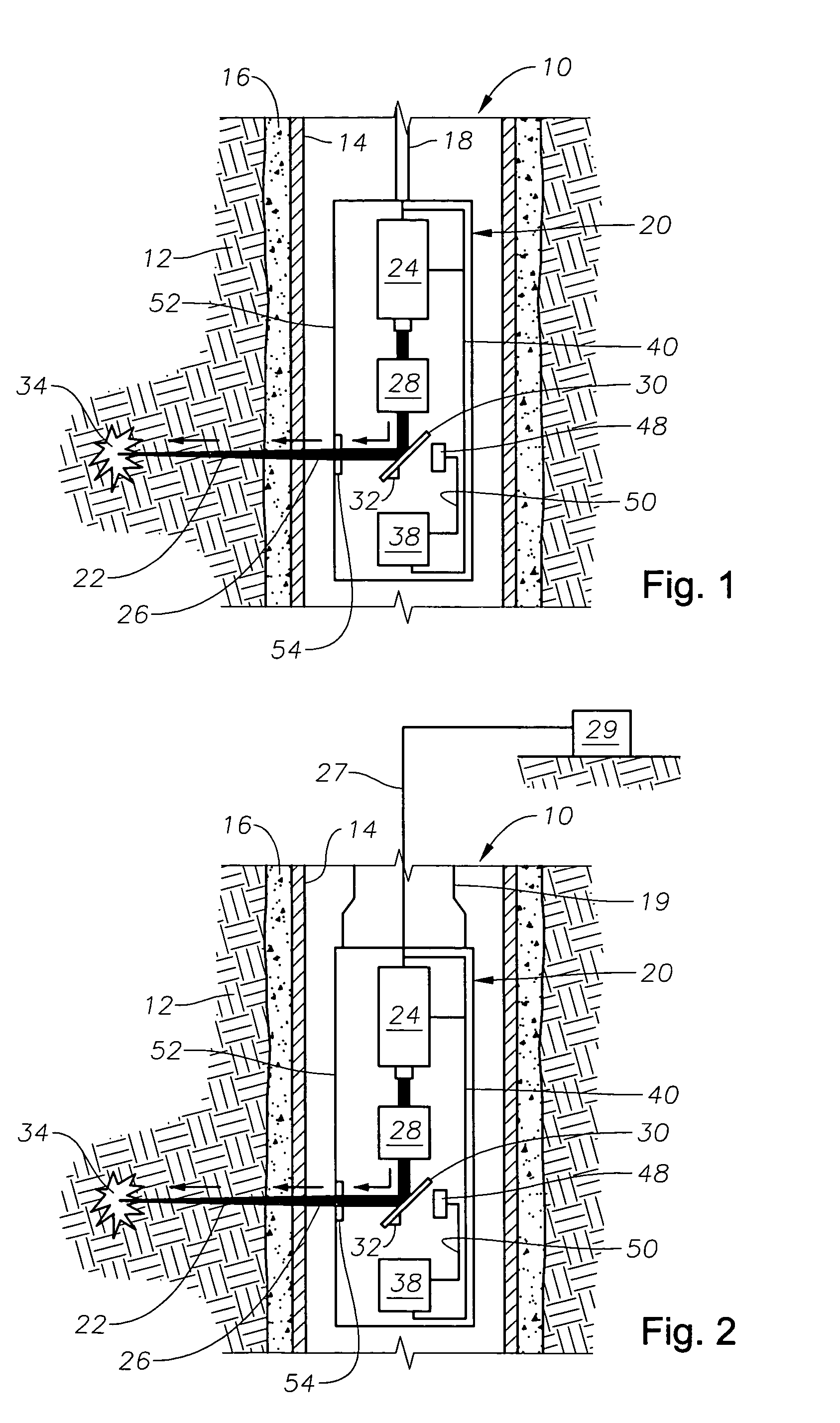Drilling, perforating and formation analysis
a technology of perforation and formation analysis, applied in the field of drilling and completing a well, can solve the problems of negative skin of perforation, obvious safety, transportation and security issues, known perforation techniques, drilling techniques, etc., and achieve the effect of increasing permeability and negative skin
- Summary
- Abstract
- Description
- Claims
- Application Information
AI Technical Summary
Benefits of technology
Problems solved by technology
Method used
Image
Examples
Embodiment Construction
[0047]Referring to FIGS. 1 and 2, a cased well bore 10 in a formation 12 has a casing 14 affixed therein. A layer of cement or similar material 16 fills an annulus between the casing 14 and the well bore 10. An illustrative laser tool 20 constructed in accordance with the invention is depicted in use perforating the well bore 10. The illustrative laser tool 20 is adapted to be inserted into the well bore 10 depending from a wireline 18 (FIG. 1) or a tubing string 19 (FIG. 2), and direct a laser beam 26. Although depicted as removing material from the formation 12 to form a perforation 22, the laser tool 20 can be adapted to also or alternatively drill a new well bore, extend an existing well bore, or heat material to emit light for use in laser induced breakdown spectroscopy (LIBS). As the illustrative laser tool 20 of FIGS. 1 and 2 is depicted perforating a cased well bore 10, it is directing the laser beam 26 onto the casing 14, the cement 16 and the formation 12. The illustrative...
PUM
| Property | Measurement | Unit |
|---|---|---|
| time intervals | aaaaa | aaaaa |
| angle | aaaaa | aaaaa |
| specific heat | aaaaa | aaaaa |
Abstract
Description
Claims
Application Information
 Login to View More
Login to View More - R&D
- Intellectual Property
- Life Sciences
- Materials
- Tech Scout
- Unparalleled Data Quality
- Higher Quality Content
- 60% Fewer Hallucinations
Browse by: Latest US Patents, China's latest patents, Technical Efficacy Thesaurus, Application Domain, Technology Topic, Popular Technical Reports.
© 2025 PatSnap. All rights reserved.Legal|Privacy policy|Modern Slavery Act Transparency Statement|Sitemap|About US| Contact US: help@patsnap.com



